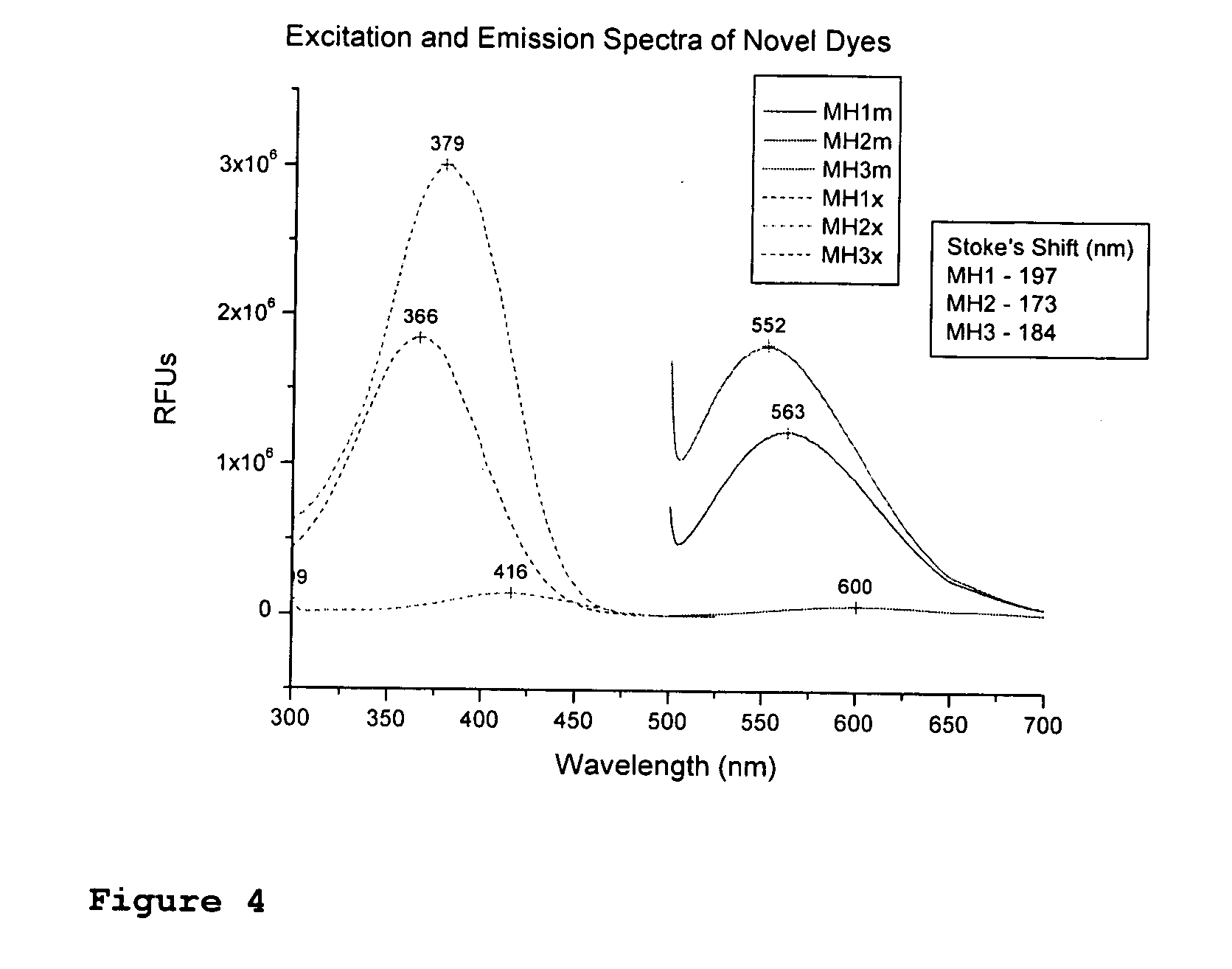Fluorescent dyes
- Summary
- Abstract
- Description
- Claims
- Application Information
AI Technical Summary
Benefits of technology
Problems solved by technology
Method used
Image
Examples
example 1
General Synthesis for Amination of 2-bromothiophene N,N-dimethylethanolamine
[0119]
[0120] 2-Bromothiophene (16.3 g, 0.1 mol), 2-(ethylamino)ethanol (100 ml), Cu metal (0.32 g), CuI (0.85 g), K3PO4(42.4 g) were added to a flask fitted with a magnetic stir bar, a condenser and sealed with a septum. The reaction mixture was stirred at 80° C. for 72 hour under nitrogen position pressure. After the reaction cooled to room temperature, 600 ml water was added and mixture was extracted with ethyl ether (3*200 ml). The combined organic layers were then washed with brine and dried over MgSO4. The solvent was removed in vacuo and the residue was purified by flash chromatography on silica gel eluted with hexane / EtoAc (1:1). The product was obtained as a liquid. Examples of Amination of 2-bromothiophene are shown in Table 7.
TABLE 7EntryR1R2ProductTemperature / TimeYield(%)1—CH3—CH2CH2OH80 / 2468.82−CH2CH2OH—CH2CH2OH80 / 2451.87
example 2
General Synthesis of 2-bromomethylthiophene
[0121] Tribromide phosphorus (PBr3, 54.2 g, 0.2 mol) was added dropwise at 0° C. to 2-hydroxymethylthiophene (50.0 g, 0.44 mol) in ethyl ether (300 mL). This mixture was stirred overnight at room temperature and poured into saturated NaHCO3 solution (400 mL). The organic layer was separated and washed by NaHCO3 solution (2×100 mL) and water (100 mL). The organic was dried over MgSO4. After evaporating the solvent, the target compound was obtained and used immediately without further purification. Yield 72.0 grams, 92.8%.
example 3
General Synthesis of 2-thienylmethyltributylphosphonium bromide
[0122] 2-bromomethylthiophene (72 g, 0.41 mol) was dissolved into toluene (400 mL). To this solution, tributylphosphine (82 g, 0.41 mol) was added. This mixture was heated to 90° C. overnight. This mixture was cooled to room temperature and the solid was filtered. The solid was washed by ethyl ether (200 mL) to give 142.3 grams, (92.3% yield).
PUM
 Login to View More
Login to View More Abstract
Description
Claims
Application Information
 Login to View More
Login to View More - R&D
- Intellectual Property
- Life Sciences
- Materials
- Tech Scout
- Unparalleled Data Quality
- Higher Quality Content
- 60% Fewer Hallucinations
Browse by: Latest US Patents, China's latest patents, Technical Efficacy Thesaurus, Application Domain, Technology Topic, Popular Technical Reports.
© 2025 PatSnap. All rights reserved.Legal|Privacy policy|Modern Slavery Act Transparency Statement|Sitemap|About US| Contact US: help@patsnap.com



